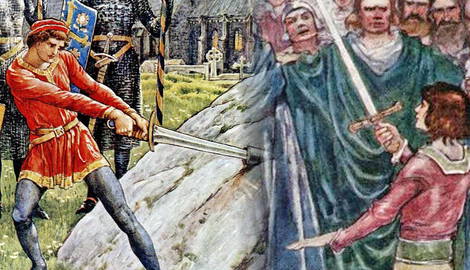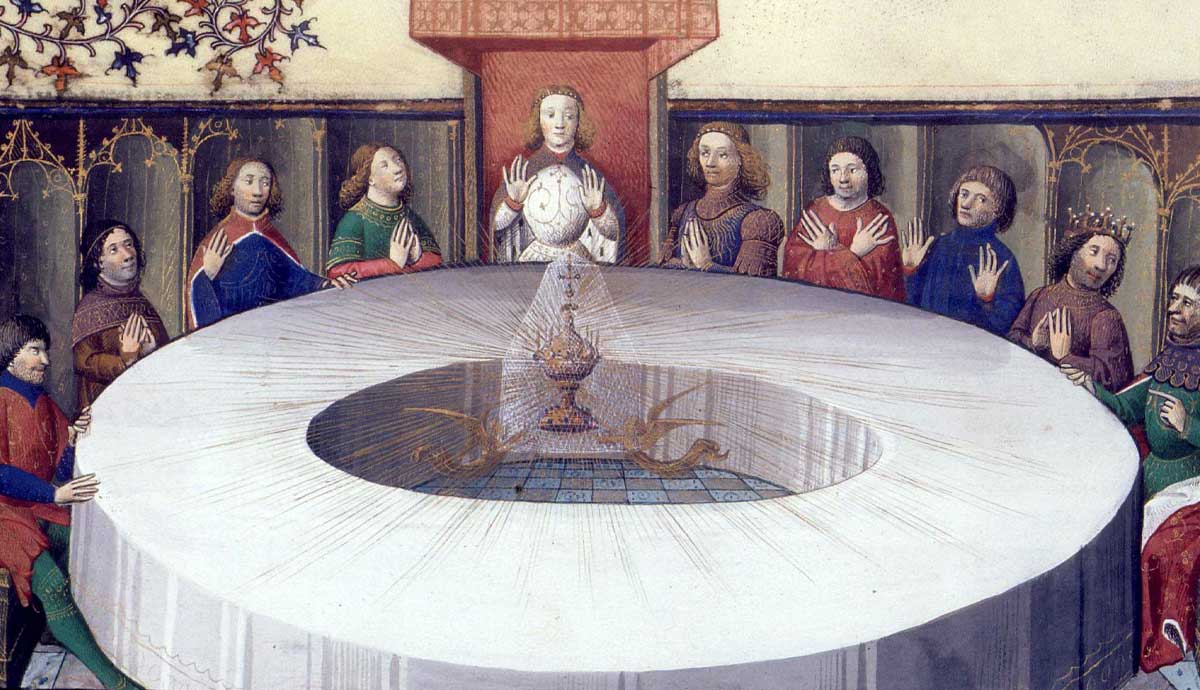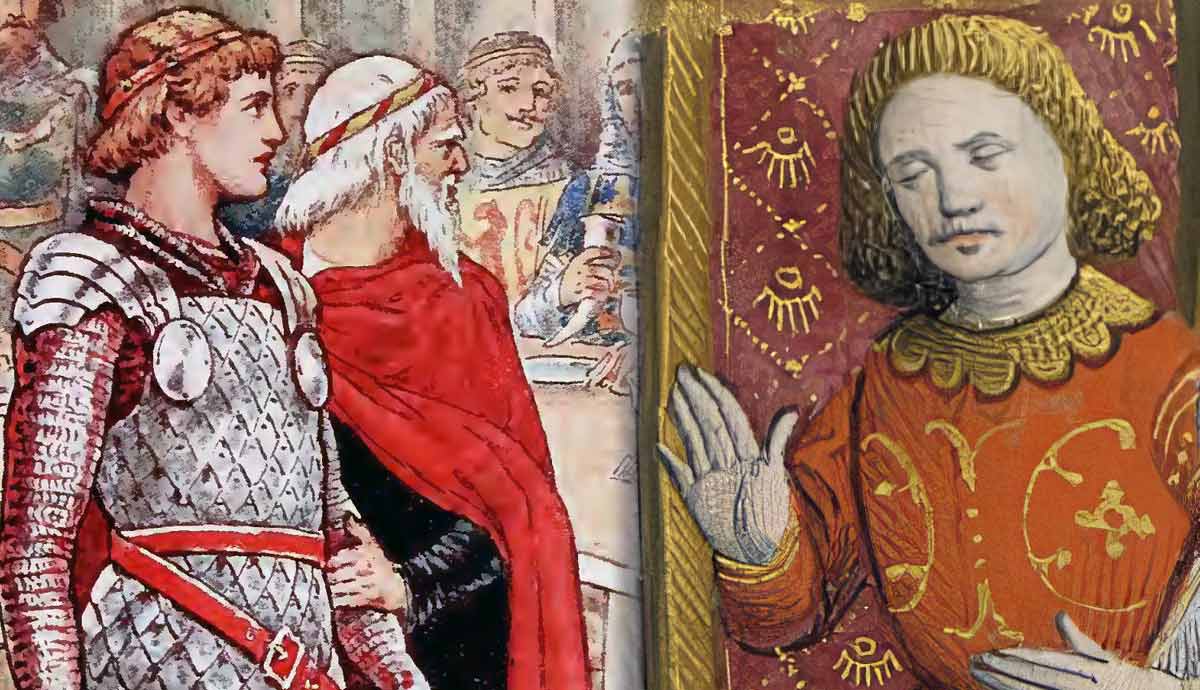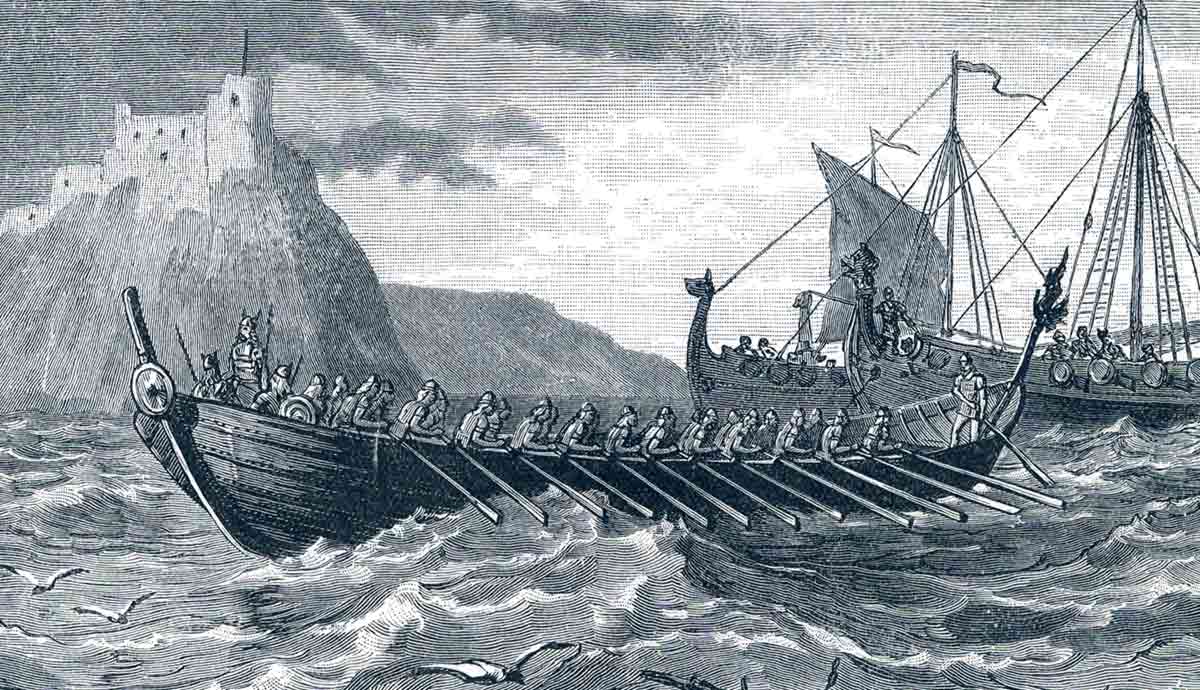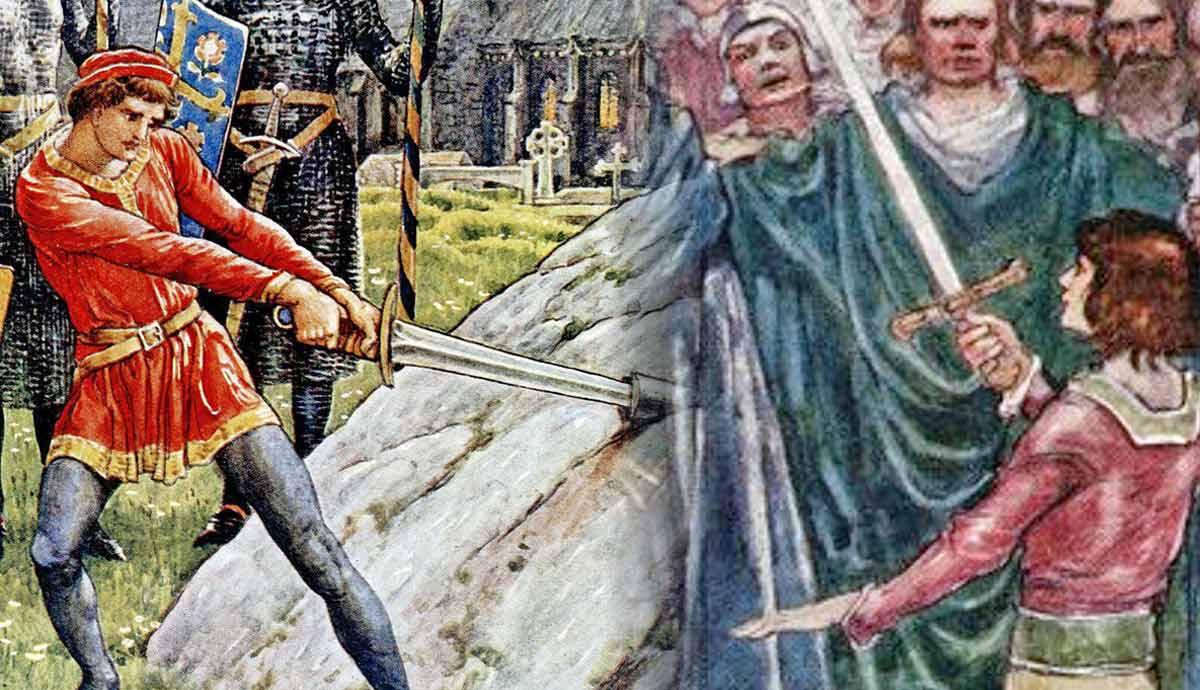
The incident of the Sword in the Stone is one of the most famous stories in the Arthurian legends. This account tells how Arthur was accepted as the rightful king of the Britons. Arthur proved his right to rule by withdrawing a special sword that had been stuck in a stone. The sword had an inscription on the side, explaining that only the rightful king would be able to take the sword out. While many people are familiar with this basic story, there are a lot of misconceptions about what the legend really says.
The Earliest Account of the Sword in the Stone

The story of the Sword in the Stone does not appear in the earliest account of King Arthur’s career. The earliest account in question was Geoffrey of Monmouth’s Historia Regum Britanniae, written in c. 1137. This tells the entire story of Arthur’s life, from his conception through to his abdication. In this account, Arthur is simply crowned king upon the death of his father, Uther Pendragon, when he was about 15 years old.
After Geoffrey of Monmouth, a writer named Wace wrote Roman de Brut in c. 1155. He closely followed Geoffrey’s account but expanded on various parts, adding new elements to the Arthurian legend. However, he too did not mention the Sword in the Stone.
It was not until c. 1200 that the Sword in the Stone was introduced to the Arthurian legends. It was first mentioned by the writer Robert de Boron in his poem Merlin. Hardly any of this poem survives, but its narrative is preserved in the slightly later Prose Merlin, possibly also written by Robert.
Why Arthur Needed to Prove His Right to Rule

Robert de Boron’s account differs from the earlier versions of the legend of King Arthur in some significant ways. Rather than portraying Arthur as succeeding his father immediately and without controversy, Robert presents matters very differently. According to the Prose Merlin, Arthur was given by Merlin to Sir Entor, or Ector, one of Uther Pendragon’s knights. Entor was to be his foster father. The reason for this is not stated. However, due to Merlin’s decision to have Arthur raised by someone else, his royal parentage becomes a secret. Therefore, Uther has no obvious heir when he eventually dies.
As a result, Uther’s death causes a crisis of succession. The nobles of the land attempt to agree on a new king, but they cannot come to a consensus. At this, Merlin speaks up and tells them to pray to Jesus for a sign to reveal who should be the new king. They agree to this suggestion, with the expectation that the sign will appear at Christmas, which is soon approaching.
The Sword in the Stone Appears

On Christmas Eve, all the nobles of the land gather together to celebrate Mass and to pray for Jesus to give them a sign, as Merlin had instructed. Just after doing this, the sign was given. A large block of stone with an anvil atop it appears on the grounds of the church where the nobles are. A sword is stuck in the stone, piercing right through the anvil. People from outside the church see what has appeared in the churchyard and rush to tell the archbishop. He comes out and sees the Sword in the Stone. On the side of the sword are the words:
“Who taketh this swerde out of this ston sholde be kynge by the eleccion of Jhesu Criste.”
Naturally, all the strongest men declare their wish to withdraw the sword, but the archbishop insists that it should be withdrawn by one who is worthy, not through mere strength. Nevertheless, they try, but no one who tries to pull the sword out, no matter how apparently virtuous, is able to do it.
Arthur Withdraws the Sword in the Stone

Eventually, the nobles give up on their attempts and decide to hold a tournament. One of the knights at this tournament is Sir Kay, the natural son of Sir Ector. He is slightly older than Arthur, his foster brother. Arthur is serving as Kay’s squire, or personal assistant. At one point, Kay asks Arthur to return home to get his sword. Arthur attempts to do so, but the chamber where Kay’s sword is kept is locked. Therefore, he starts returning to the tournament empty-handed.
However, while on the way back to the tournament, he happens to pass the churchyard with the Sword in the Stone. Apparently not realizing its significance, Arthur approaches it, pulls it out, and takes it with him. When he returns to Kay, he explains that he was not able to get his sword, so he instead took the sword that had been stuck in the stone. To Arthur, there is nothing remarkable about this statement, but Kay understands its apparent significance.
Proving Arthur’s Right to Rule

However, this does not mean that Arthur is immediately accepted as king, as many people today imagine. Kay takes the sword to his father, Ector, to explain what has just happened. Ector leads the two boys back to the churchyard and gets Arthur to put the sword back in the stone. He does so, and then Ector instructs Kay to try to pull it out. Naturally, Kay is not able to do so. At this, Ector appears to realize that this really does mean that Arthur is the rightful king. Why Ector needs to have this verified privately is not made clear in Robert’s account, since Ector already knew that Arthur was the son of Uther Pendragon.
In any case, Ector gets Arthur to swear to make Kay his seneschal upon becoming king, which was a position of great honor. Not only should Arthur give Kay this position, but he should be lenient and understanding towards any dishonorable behavior shown by Kay. Arthur agrees to this.

After this, Arthur has to prove his right to rule to all the other nobles of the land. Ector approaches the archbishop and explains that he will have Arthur try to remove the sword. Thus, in the presence of the archbishop and the nobles, Arthur does exactly that. The archbishop rejoices at the fact that Jesus has revealed his choice as king. However, the nobles strongly object to the idea of accepting such a boy—a common boy, as far as they know—as their king.
Despite the archbishop insisting that this is the will of the Lord, many of the nobles and the common people in general refuse to accept this decision. They make an agreement with the archbishop that they will repeat the test at the next Christian festival. Despite Arthur performing the same feat on that occasion, the same dispute arises. The same agreement is made again, with the same objection arising, until the nobles are finally forced to accept that Arthur is indeed Jesus’ chosen king of the Britons.
Inaugurated as King

It is at Pentecost that Arthur is finally crowned king. This takes place in the church where the Sword in the Stone was located. During the coronation ceremony, the archbishop instructs Arthur to retrieve the sword one final time. He refers to it as:
“…the swerde wherewith ye shull kepe justice, to deffende Holy Cherche, and mayntene right and the Cristin feith to youre power.”
The fact that this is described as the sword with which Arthur will “keep justice” indicates that this is identical to Caliburn, or Excalibur. This is the special sword used by Arthur in his battles seen in earlier sources. In the Vulgate Cycle, which came just after the Prose Merlin, this identification is made explicit. It is only later, in the Post-Vulgate Cycle, that the Sword in the Stone is made separate from Excalibur. Also, the close association between the Sword in the Stone and the defense of the Holy Church and the Christian faith is notable. This suggests that the whole story of the Sword in the Stone may be an allegory based on the concept of the Sword of Peter. This represented religious authority, while the name Peter means rock or stone.
How Arthur Became King Through the Sword in the Stone

In conclusion, the story of the Sword in the Stone explains how Arthur proved his right to rule and became recognized as the rightful king of the Britons. This story first appears in Robert de Boron’s Merlin poem, written in c. 1200, and then later in the Prose Merlin, written in c. 1210. Contrary to the earlier versions of the Arthurian legend, this version has Arthur’s parentage kept secret. For this reason, his true identity as the son of Uther Pendragon is unknown to almost everyone, leading to a succession crisis. To solve the issue, Christ sends a sign in the form of the Sword in the Stone. It appears in the churchyard next to where the nobles are praying.
None of the mightiest or worthiest men in the land are able to pull the sword out. Yet, while sent home to get his foster brother’s sword, Arthur happens to come across it and pulls it out. After a major controversy and many repeated demonstrations, Arthur is finally accepted as the rightful king of the Britons.
